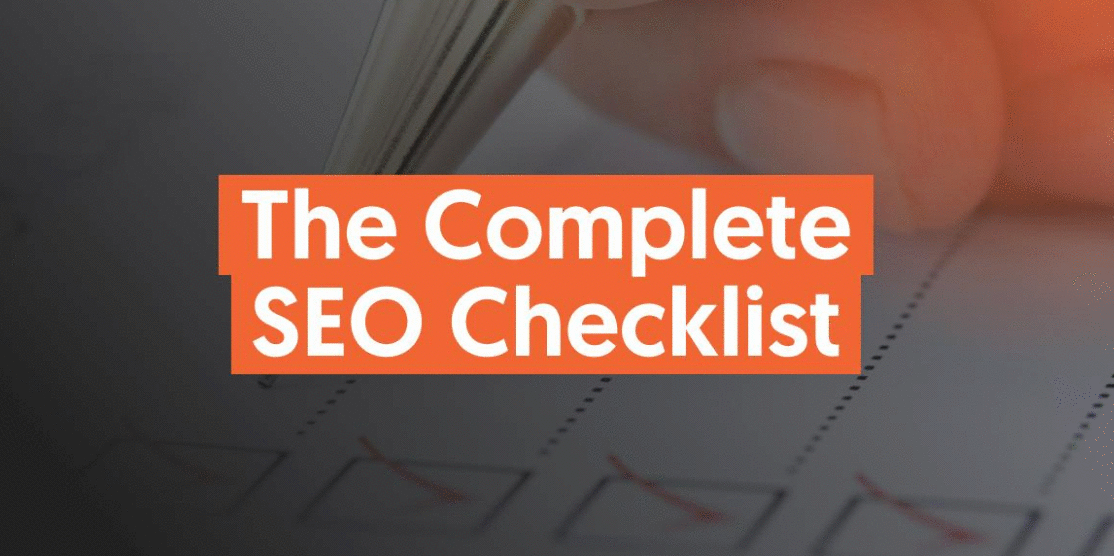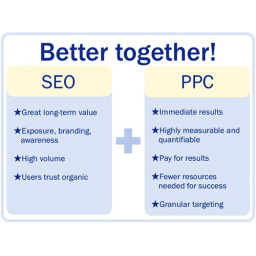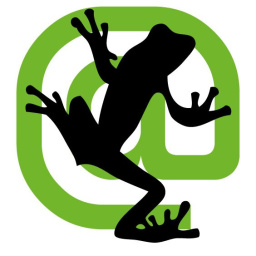Ultimate SEO Checklist: Guide
by Abbs
Posted on 2023-05-18 08:09:24

Creating an SEO Checklist
An SEO list is a list of actions that can help ensure that a website is optimized for online search engine. An SEO list can be utilized to ensure that all on-page and off-page optimization tactics are being executed correctly. In this chapter, we will discuss the actions to create an effective SEO checklist for your website.
Why is an SEO Checklist Important?
An SEO list can help you stay arranged and make sure that you are not missing any vital SEO steps. It can also function as a reference point to ensure that your website is optimized for online search engine. An SEO checklist can likewise assist you identify locations where enhancements can be made and track development gradually.
TIP:Mobile-first is the way to go! Ensure your website is fully responsive and mobile-friendly.
Actions to Create an SEO Checklist
-
Conduct a Site Audit: The primary step in creating an SEO checklist is to carry out a site audit to identify areas that require enhancement. A site audit will assist you identify any technical concerns, on-page optimization issues, and off-page issues that might be affecting your website's search engine rankings. There are a number of tools readily available that can assist you carry out a site audit, such as Google Search Console and SEMrush.
-
Identify Key Performance Indicators (KPIs): Identify the KPIs that are very important to your business, such as organic traffic, conversion rates, and income. These KPIs will help you determine the success of your SEO efforts and track progress with time.
-
Develop an On-Page Optimization List: An on-page optimization list must include all the crucial elements that require to be optimized on each page of your website. These aspects include page titles, meta descriptions, header tags, content, images, and internal links. An on-page optimization checklist will assist you ensure that each page is optimized correctly for online search engine.
![big seo techniques]()
-
Develop an Off-Page Optimization Checklist: An off-page optimization checklist must include all the crucial elements that require to be optimized off your website. These elements include link building, social networks, and online directory sites. An off-page optimization list will help you ensure that you are building quality backlinks and leveraging social media to improve your website's authority and relevance.
-
Focus On Action Items: Focus On the action products based upon their effect on your website's SEO. Focus on the most vital items first and work your method down the list.
-
Set Objectives and Track Progress: Set reasonable objectives for each action product and track progress gradually. This will assist you determine the success of your SEO efforts and identify locations where improvements can be made.
Analyzing Competitor SEO
Rival analysis is an essential aspect of any effective SEO strategy. By examining your rivals, you can get valuable insights into what is working well in your market and identify spaces and chances for your website to stand out. In this chapter, we will discuss how to perform an extensive competitor analysis to improve your website's SEO.
TIP:Speed up your success with caching! Utilize browser caching to enhance user experience.
Step 1: Identify Your Competitors
The initial step in analyzing your competitors' SEO is to identify who your rivals are. Your rivals are not simply those who offer the very same services or products as you do; they can likewise be websites that rank for the very same keywords as you. Once you have actually identified your competitors, you can start evaluating their SEO strategies.
Action 2: Examine Competitors' Keywords
The next step is to identify the keywords your competitors are ranking for. This will offer you an idea of the keywords you ought to target to improve your rankings. There are several tools available to help you evaluate your rivals' keywords, such as SEMrush, Ahrefs, and Moz.
Step 3: Analyze Rivals' Backlinks
Backlinks are a crucial ranking aspect for search engines. By examining your competitors' backlinks, you can get an idea of the kinds of websites that are linking to them and the quality of those links. This information can assist you identify possible link building chances and develop a strategy to get high-quality backlinks.
Step 4: Examine Rivals' Content
Another important aspect of rival analysis is analyzing their content. Take a look at the kind of content they are creating, the format they use, and the subjects they cover. This information can help you identify gaps in their content strategy and establish a content strategy to fill those gaps.
Step 5: Analyze Competitors' On-Page Optimization
On-page optimization describes the process of optimizing specific web pages to rank higher and earn more relevant traffic in search engines. Examine your competitors' on-page optimization by taking a look at their page titles, meta descriptions, header tags, and content. This analysis can help you identify on-page optimization techniques that operate in your market and develop a strategy to improve your own on-page optimization.
Action 6: Identify Opportunities and Gaps
After analyzing your competitors' SEO techniques, you need to be able to identify spaces and chances for your own website. Look for locations where your competitors are weak or where they are not targeting specific keywords. This information can help you establish a strategy to fill those spaces and target those keywords to improve your rankings.
Action 7: Develop an Action Strategy
Finally, develop an action plan based upon your competitor analysis. This strategy should include the actions you need to take to improve your website's SEO, such as optimizing your on-page content, obtaining top quality backlinks, and establishing a content strategy to fill spaces in your market.
Finest Practices for E-Commerce SEO
In today’& rsquo; s competitive digital landscape, having a strong SEO strategy is essential for the success of any e-commerce website. Effective e-commerce SEO practices can assist your online store stand apart from the competition, drive more traffic to your website, and boost sales.
Conduct Keyword Research
The first step in optimizing your e-commerce site for SEO is conducting comprehensive keyword research. By understanding what terms and phrases potential customers are searching for, you can tailor your content and item pages to fulfill their needs.
When performing keyword research, focus on long-tail keywords, which are more particular and targeted than generic keywords. For instance, instead of optimizing for “& ldquo; shoes, & rdquo; think about optimizing for & ldquo; ladies & rsquo; s running shoes with arch support.”
& rdquo; Optimize Item Pages
Your e-commerce website’& rsquo; s product pages are the backbone of your online store, and optimizing them for SEO is crucial. Here are some finest practices to follow:
- Usage descriptive and engaging item titles that include the target keyword
- Compose unique item descriptions that provide worth to the consumer and include relevant keywords
- Include top quality item images and optimize them with alt tags that include relevant keywords
- Include client evaluations and ratings on product pages
Create Classification Pages
Category pages can assist arrange your products and make them more accessible to both clients and search engines. Here are some finest practices for optimizing your classification pages:
- Use detailed and keyword-rich category names
- Write special and helpful category descriptions that include relevant keywords
- Include high-quality images that display the items in the category
- Link to related products and subcategories within each category page
Improve Site Architecture
Site architecture plays a vital role in the total user experience and SEO of your e-commerce website. A well-structured site will make it much easier for online search engine to crawl and index your pages, along with improve the user experience for your clients.
TIP:Unlock the secret to higher rankings: Craft compelling meta titles and descriptions that entice clicks!
To improve site architecture, think about carrying out the following:
- Create a clear hierarchy of pages, with your homepage on top and subcategory and item pages listed below
- Use breadcrumb navigation to assist users and online search engine understand the site’& rsquo; s structure Execute internal linking to link associated pages and assist search engines crawl the site more efficiently
- Use a sitemap to help online search engine understand the general structure of your website
Construct Quality Backlinks
Backlinks are an essential component of SEO, and e-commerce sites can benefit greatly from quality backlinks. Connect to relevant websites and blogs in your market and deal to provide valuable content in exchange for a link back to your site.
Create shareable content that individuals will wish to link to, such as useful article, infographics, and item guides. Visitor blogging is likewise a fantastic way to construct backlinks and establish your brand as an authority in your market.
Usage Social Network
Social network can be a valuable tool for e-commerce SEO. Share your products on social media channels like Facebook, Twitter, and Instagram, and motivate your fans to share your items with their family and friends.

Social network can also assist you construct backlinks to your site. Share your content on social media and encourage others to share it as well. You can also utilize social media to engage with your consumers and build brand name awareness.
Monitor Your Results
It is necessary to monitor your e-commerce SEO results to see what's working and what's not. Usage analytics tools like Google Analytics to track your site's traffic, bounce rate, and other metrics.
Track your keyword rankings to see how your site is ranking for different keywords. Use tools like SEMrush and Ahrefs to track your backlinks and see where you require to improve.
Local SEO Strategies
Local SEO is a critical element of search engine optimization that aims to help companies rank higher in location-based search results page. This is especially important for small businesses that rely on local clients to drive earnings. In this chapter, we will check out the very best practices for optimizing your website for local search, including:
TIP:Link like a boss! Build a network of high-quality internal and external links to boost your credibility.
- Understanding the importance of local SEO
- Conducting local keyword research
- Claiming and optimizing your Google My Business noting
- Building local citations
- Creating location-specific content
- Building backlinks from local sources
- Leveraging social media for local SEO
Understanding the Significance of Local SEO
Local SEO is crucial for organizations that depend on local customers to drive earnings. In today's world, the majority of people utilize online search engine to find local businesses. In fact, according to Google, 46% of all searches have a local intent. Therefore, if you're not optimizing your website for local search, you're missing out on a considerable amount of potential business.
Performing Local Keyword Research
Keyword research is a crucial element of any SEO strategy, and this is specifically true for local SEO. You require to identify the keywords that your possible customers are using to discover companies like yours. This will assist you to create targeted content that ranks well in local search engine result.
To perform local keyword research, you can use tools like Google's Keyword Coordinator and Ahrefs' Keyword Explorer. These tools permit you to identify the keywords that relate to your business and have a high search volume in your target place.
Declaring and Optimizing Your Google My Business Listing
Google My Business is a complimentary tool that enables organizations to handle their online presence throughout Google, including search and maps. It's an essential tool for local SEO, as it allows you to control how your business appears in Google search results.
To declare your Google My Business listing, you require to create a Google account and provide information about your business, including your name, address, phone number, website, and hours of operation. As soon as you have actually declared your listing, you can optimize it by adding pictures, reacting to reviews, and creating posts.
TIP:Stay ahead of the competition! Monitor your analytics and adjust your SEO strategy accordingly.
Building Local Citations
Citations are online references to your business that include your name, address, and phone number (NAP). They are an essential part of local SEO, as they assist online search engine to verify the precision of your business information.
To construct local citations, you can start by sending your business information to local directory sites, such as Yelp, Yellow Pages, and Citysearch. You can also connect to local newspapers and blogs to ask for a mention of your business.
Creating Location-Specific Content
Creating location-specific content is another critical element of local SEO. This includes creating content that is customized to the interests and needs of your local audience.
To create location-specific content, you can begin by looking into the topics that pertain to your target location. You can likewise create location-specific landing pages on your website that target local keywords and include information about your business and its services.
Building Backlinks from Local Sources
Backlinks are an essential component of SEO, and this is specifically real for local SEO. Building backlinks from local sources, such as local papers, blog sites, and directory sites, can help you to improve your local search rankings.
To build backlinks from local sources, you can begin by connecting to local blog writers and reporters to request a link to your website. You can likewise participate in local occasions and sponsor local companies to build relationships with local services and increase your visibility in the neighborhood.
Conclusion
E-commerce SEO can be a complex and difficult procedure, but with the ideal strategies and tools, it can be done successfully. Use the very best practices outlined in this chapter to optimize your e-commerce site for search engines and drive more traffic and sales to your online shop.
By carrying out keyword research, optimizing product pages, improving site structure, building quality backlinks, utilizing social media, and monitoring your results, you can accomplish terrific results with e-commerce SEO.
Effective e-commerce SEO practices can assist your online shop prosper in today’& rsquo; s competitive digital landscape. By carrying out comprehensive keyword research, optimizing product and category pages, improving site architecture, and optimizing for mobile, you can improve your search engine rankings, drive more traffic to your website, and boost sales.
Analyzing your competitors' SEO techniques is an important aspect of any effective SEO strategy. By following these steps, you can gain valuable insights into your rivals' methods and develop a strategy to improve your own website's SEO. Remember to conduct regular competitor analyses to remain ahead of the competitors and continue to improve your website's rankings.
Creating an SEO list is an important step in optimizing your website for online search engine. It can help you stay organized, identify areas for improvement, and track progress gradually. By following the actions described in this chapter, you can create an effective SEO list that will assist improve your website's online search engine rankings and drive more traffic to your site.
 What Are Long-Tail Keywords and Why Should You Utilize Them?
In the ever-evolving world of Seo (SEO
What Are Long-Tail Keywords and Why Should You Utilize Them?
In the ever-evolving world of Seo (SEO
 Making Use Of Paid Advertising for SEO
While organic search traffic is essential for any website, i
Making Use Of Paid Advertising for SEO
While organic search traffic is essential for any website, i
 Using Influencer Marketing for SEO
Influencer marketing has actually become a popular strategy for
Using Influencer Marketing for SEO
Influencer marketing has actually become a popular strategy for



